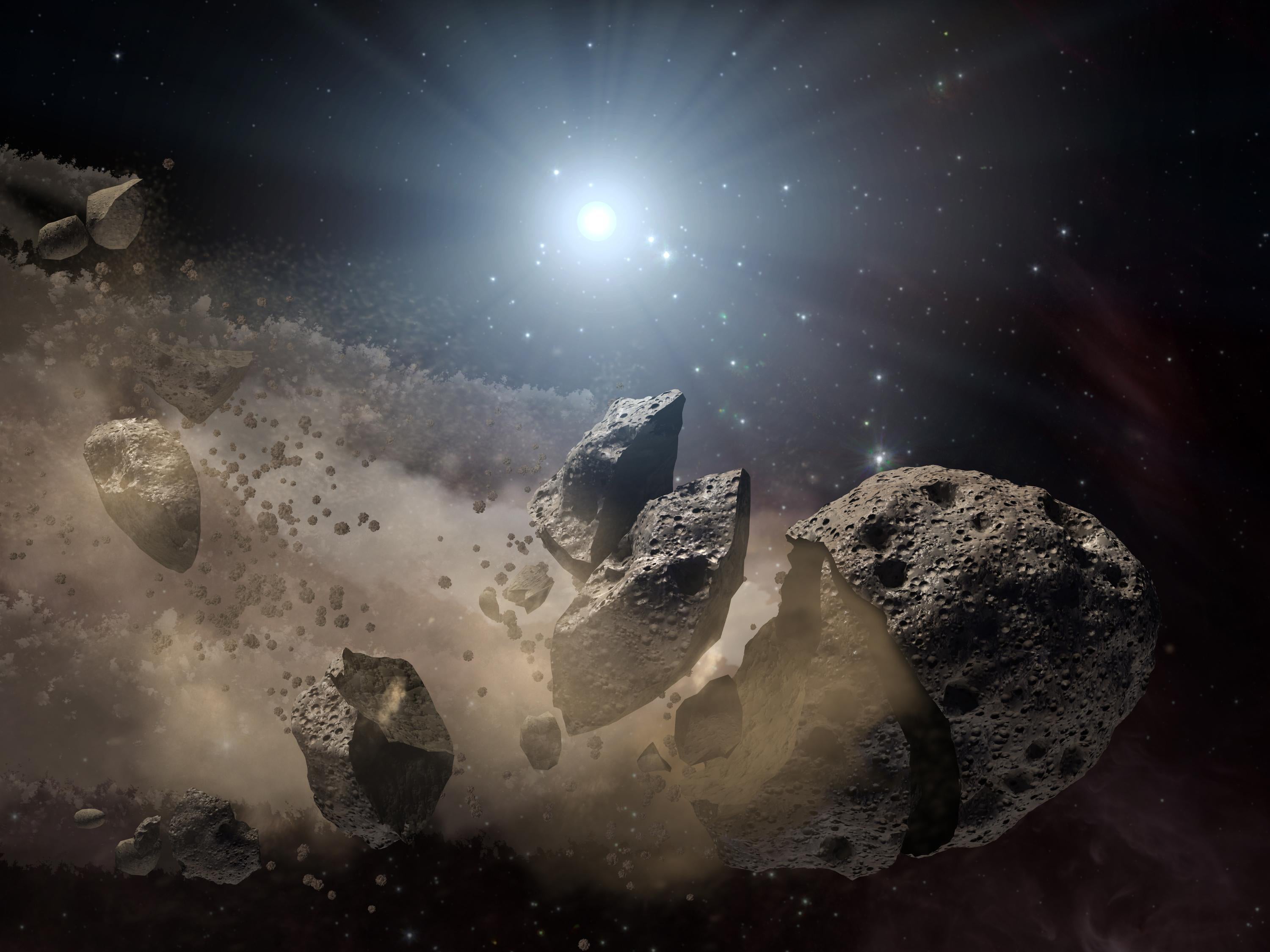The Independent's journalism is supported by our readers. When you purchase through links on our site, we may earn commission.
Scientists discover fragment of 'missing link' asteroid that led to explosion of life on Earth
Sample from a Swedish quarry is thought to be from a 'bullet' asteroid that set off a massive meteor shower 470 million years ago

Scientists in Sweden have discovered a never-before seen class of meteorite that could be the ‘missing link’ between a gigantic collision in the asteroid belt 470 million years ago and the subsequent explosion of diverse life forms here on Earth.
Although it’s usually thought that meteorite impacts are disastrous for species on Earth (the classic example is the colossal impact thought to have killed off the dinosaurs 66 million years ago) there’s plenty of evidence to suggest that these events can also be beneficial to the overall diversity on the planet.
It's thought that just such an impact – or rather, a string of them – dramatically boosted biodiversity on the planet during the Ordovician Period some 470 million years ago. It's believed that a collision of two asteroids (or possibly an asteroid and a comet) out in space caused a shower of meteors to rain down on Earth.
Over time fragments of this meteor shower have been found around the planet and dated to 470 million years ago – but until now scientists had not found any evidence of the ‘killer’ asteroid that started this chain of events.
During the Ordovician Period most life on Earth was found in the ocean, with jawless fish, molluscs and insect-like arthropods making up the bulk of the species roll-call. However, a study from 2008 showed that the planet went through a “major phase of biodiversification” at this time shortly after “the largest documented asteroid breakup event during the past few billion years”.
The evidence for this breakup comes from the abundance of L-chondrite meteorites – the second most common meteorite type - fragments of which first started appearing on Earth around 470 million years ago.
"Something we didn't really know about before was flying around and crashed into the L-chondrites," said Gary Huss, co-author of the study that analysed the sample (published in Earth and Planetary Science Letters). This newly-discovered fragment is thought to be that very object – the mysterious ‘bullet’.
The composition of the fragment differs from known meteorite samples and its exposure age – the length of time it sailed through space – places it at the 'scene of the crime’ when meteors rained down on the planet during the Ordovician Period.
“It's a very, very strange and unusual find," Birger Schmitz, the lead author of the study, told Live Science. "I think [it] adds to the understanding that the meteorites that come down on Earth today may not be entirely representative of what is out there.”
It’s not clear exactly why the Ordovician meteor shower led to a greater variety of life on the plane although some more far-fetched theories suggest that life itself was ‘seeded’ by organisms hitching a ride on asteroids.
A more likely explanation is that the impact craters caused by the collisions provided perfect test-beds for developing life. When meteorites hit the surface of the planet they scooped out bubbling pools of minerals and nutrients that served - in Carl Zimmer's words - as “natural beakers that synthesized new chemicals essential for life”. However, even this is still just a theory - and the impacts might have also fostered life by creating new habitats, like restructured shorelines.
If further geochemical tests on the newly discovered fragment confirm its suspected origins then scientists will have pinned down another piece of the solar system’s history – but figuring out what happened closer to home might be more difficult still.
Join our commenting forum
Join thought-provoking conversations, follow other Independent readers and see their replies
Comments
Bookmark popover
Removed from bookmarks